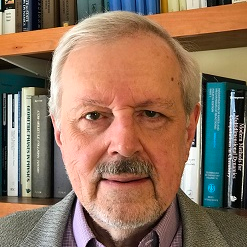Combined Quantum Mechanical and Molecular Mechanical Methods and Simulations
A special issue of Molecules (ISSN 1420-3049). This special issue belongs to the section "Computational and Theoretical Chemistry".
Deadline for manuscript submissions: closed (7 September 2018) | Viewed by 98431
Special Issue Editors
Interests: multi-scale modeling; combined QM/MM; ion solvation and transport; membrane proteins; enzymatic reactions
Interests: chemical dynamics; catalysis; photochemistry; molecular modeling; computational thermodyanmics; electronic structure theory
Special Issues, Collections and Topics in MDPI journals
Special Issue Information
Dear Colleagues,
Combined quantum-mechanics/molecular-mechanics (QM/MM) is an important component of many methods for in multi-scale modelling and simulations. The algorithms involve partitioning an entire system into a small subsystem of primary interest, which is modeled by an accurate QM level of theory, and the surroundings that interact with it, which are treated by MM force fields for computational efficiency. The surroundings may include the less active part of a large molecule, the solvent, all or part of a protein, or more than one of these—or other possibilities. The integration of QM and MM methods makes it affordable to realistically describe reactions in complex environments. QM/MM has found applications in many research fields such as enzymatic reactions and other catalytic reactions, ion solvation and transport, photochemistry, nanostructured materials, etc.
This Special Issue of Molecules, “Combined Quantum Mechanical and Molecular Mechanical Methods and Simulations,” presents both recent developments and applications in this exciting field.
Prof. Hai Lin
Prof. Dr. Donald G. Truhlar
Guest Editors
Manuscript Submission Information
Manuscripts should be submitted online at www.mdpi.com by registering and logging in to this website. Once you are registered, click here to go to the submission form. Manuscripts can be submitted until the deadline. All submissions that pass pre-check are peer-reviewed. Accepted papers will be published continuously in the journal (as soon as accepted) and will be listed together on the special issue website. Research articles, review articles as well as short communications are invited. For planned papers, a title and short abstract (about 100 words) can be sent to the Editorial Office for announcement on this website.
Submitted manuscripts should not have been published previously, nor be under consideration for publication elsewhere (except conference proceedings papers). All manuscripts are thoroughly refereed through a single-blind peer-review process. A guide for authors and other relevant information for submission of manuscripts is available on the Instructions for Authors page. Molecules is an international peer-reviewed open access semimonthly journal published by MDPI.
Please visit the Instructions for Authors page before submitting a manuscript. The Article Processing Charge (APC) for publication in this open access journal is 2700 CHF (Swiss Francs). Submitted papers should be well formatted and use good English. Authors may use MDPI's English editing service prior to publication or during author revisions.
Keywords
- embedding theory and calculations
- enzyme catalysis
- heterogeneous catalysis
- molecular mechanics
- multi-scale modeling
- photochemistry
- polarization
- quantum mechanics
- reaction dynamics
- solvation and transport
Benefits of Publishing in a Special Issue
- Ease of navigation: Grouping papers by topic helps scholars navigate broad scope journals more efficiently.
- Greater discoverability: Special Issues support the reach and impact of scientific research. Articles in Special Issues are more discoverable and cited more frequently.
- Expansion of research network: Special Issues facilitate connections among authors, fostering scientific collaborations.
- External promotion: Articles in Special Issues are often promoted through the journal's social media, increasing their visibility.
- e-Book format: Special Issues with more than 10 articles can be published as dedicated e-books, ensuring wide and rapid dissemination.
Further information on MDPI's Special Issue polices can be found here.







